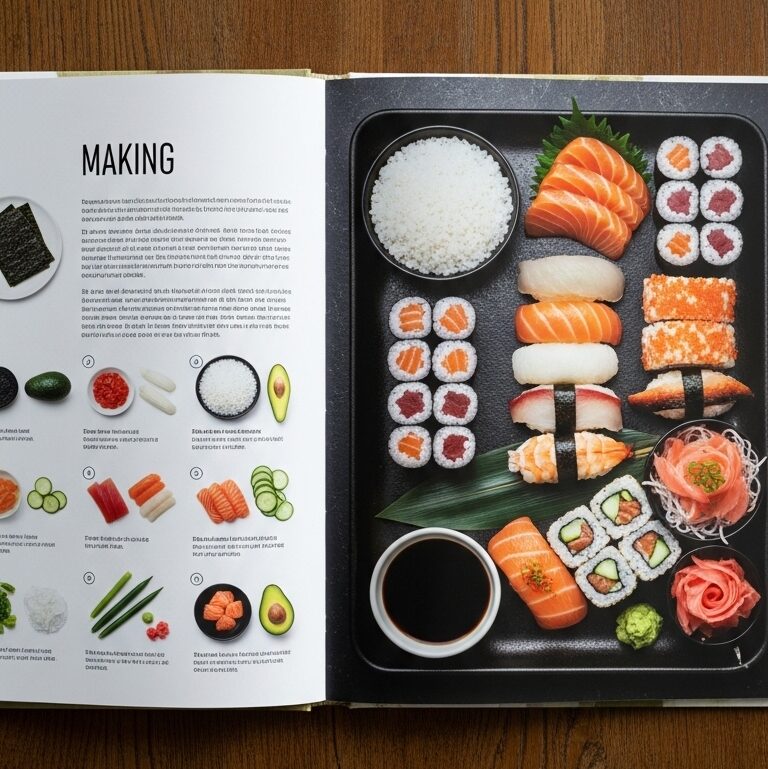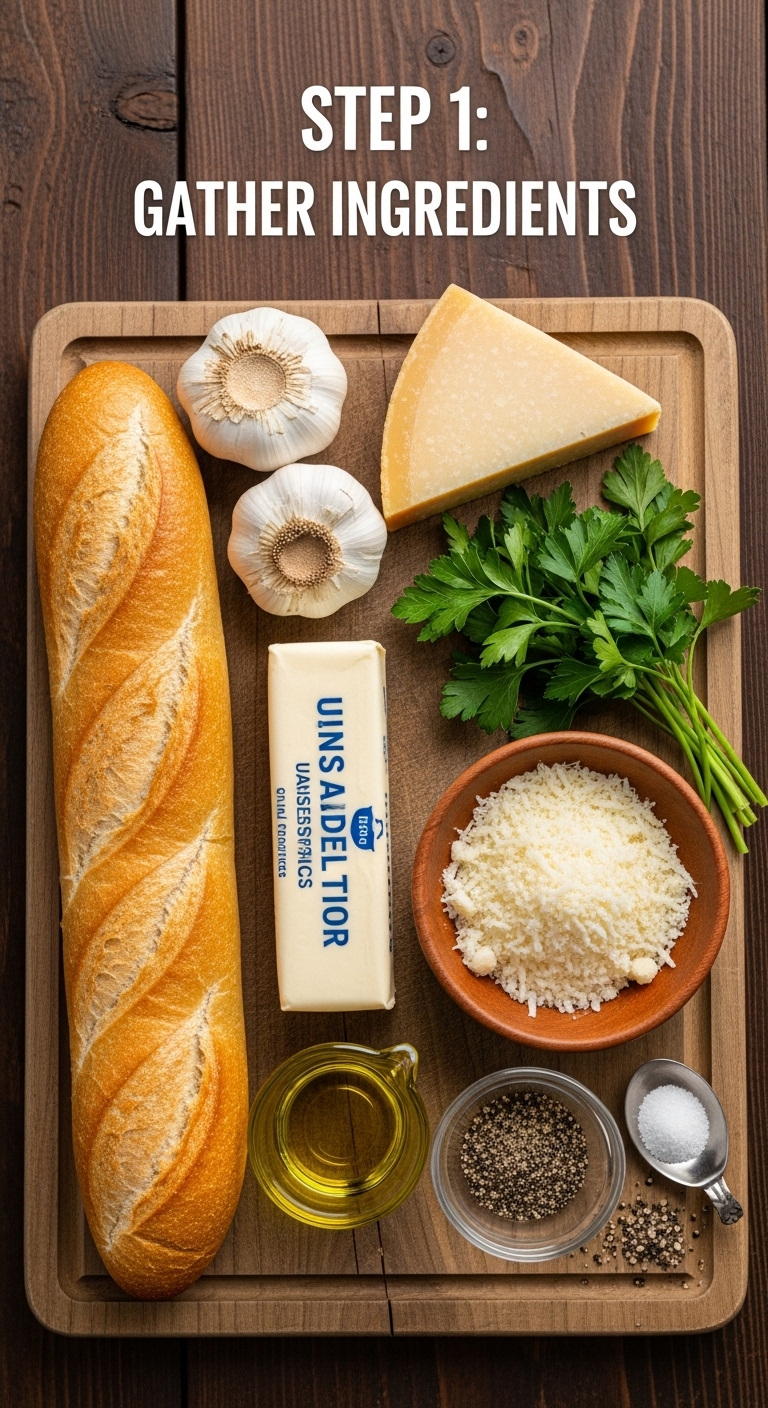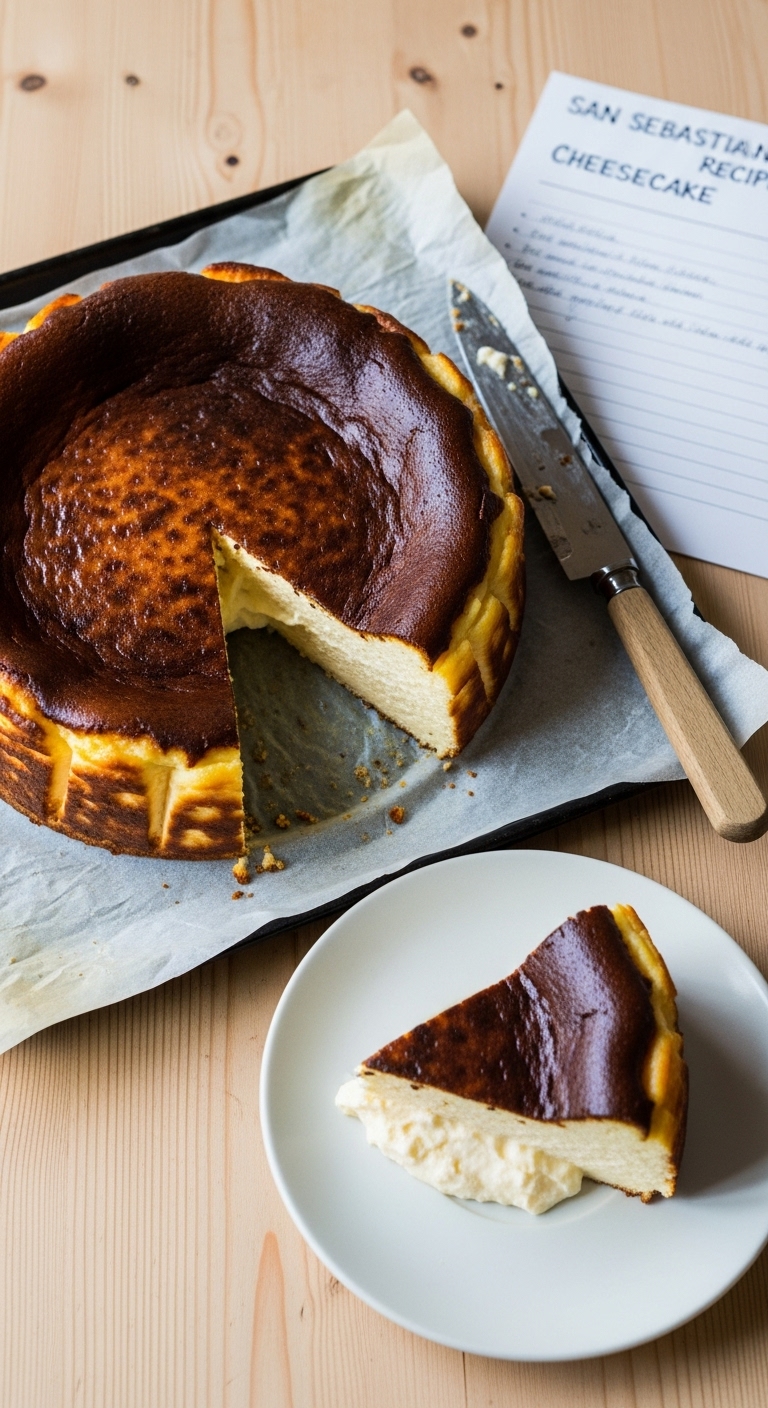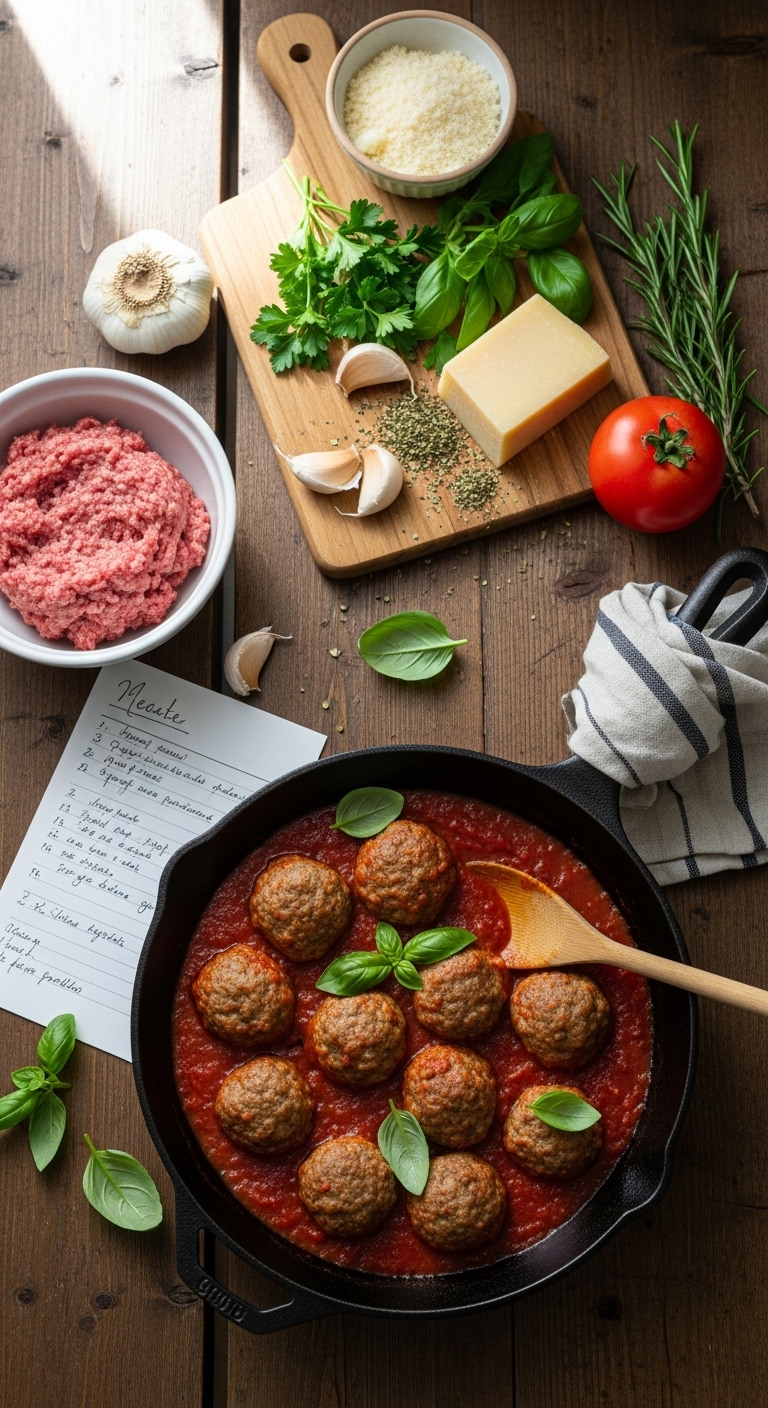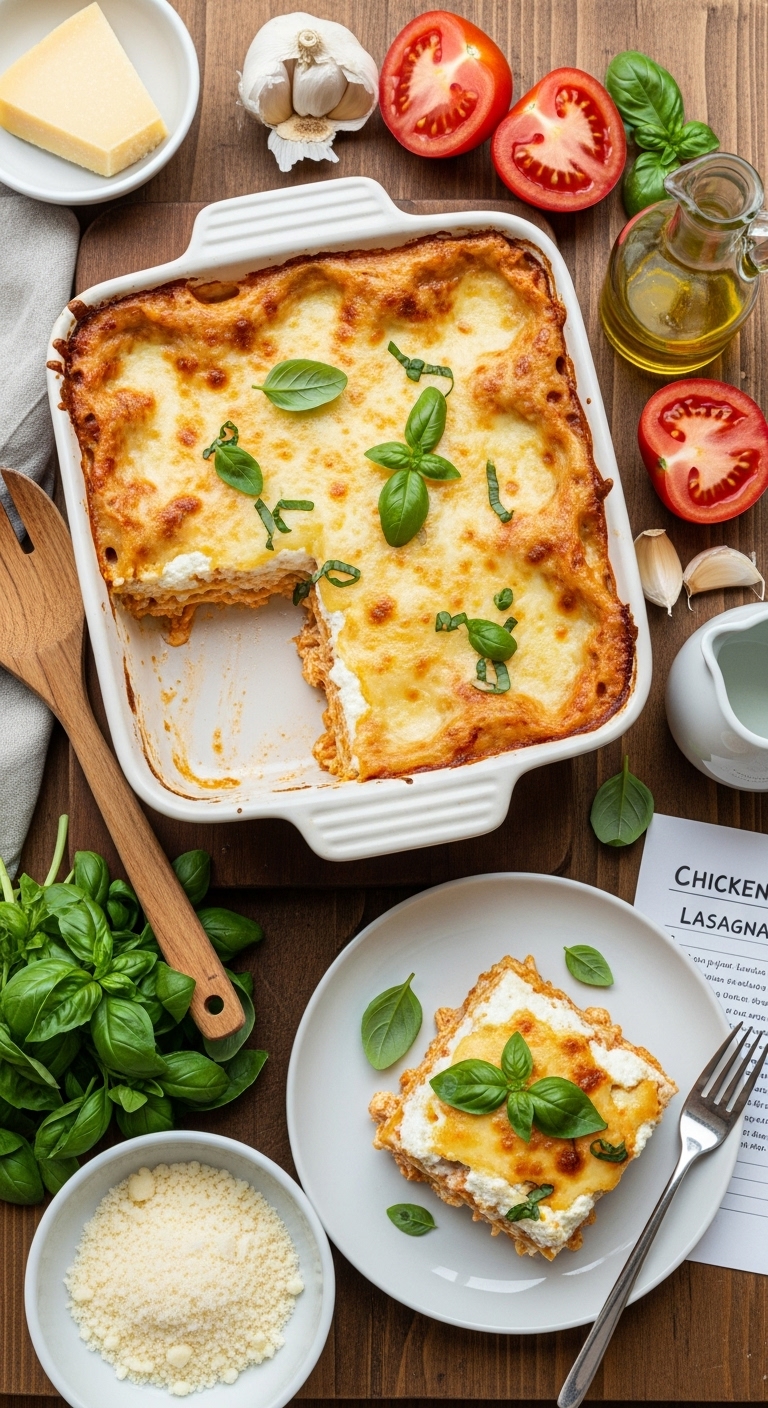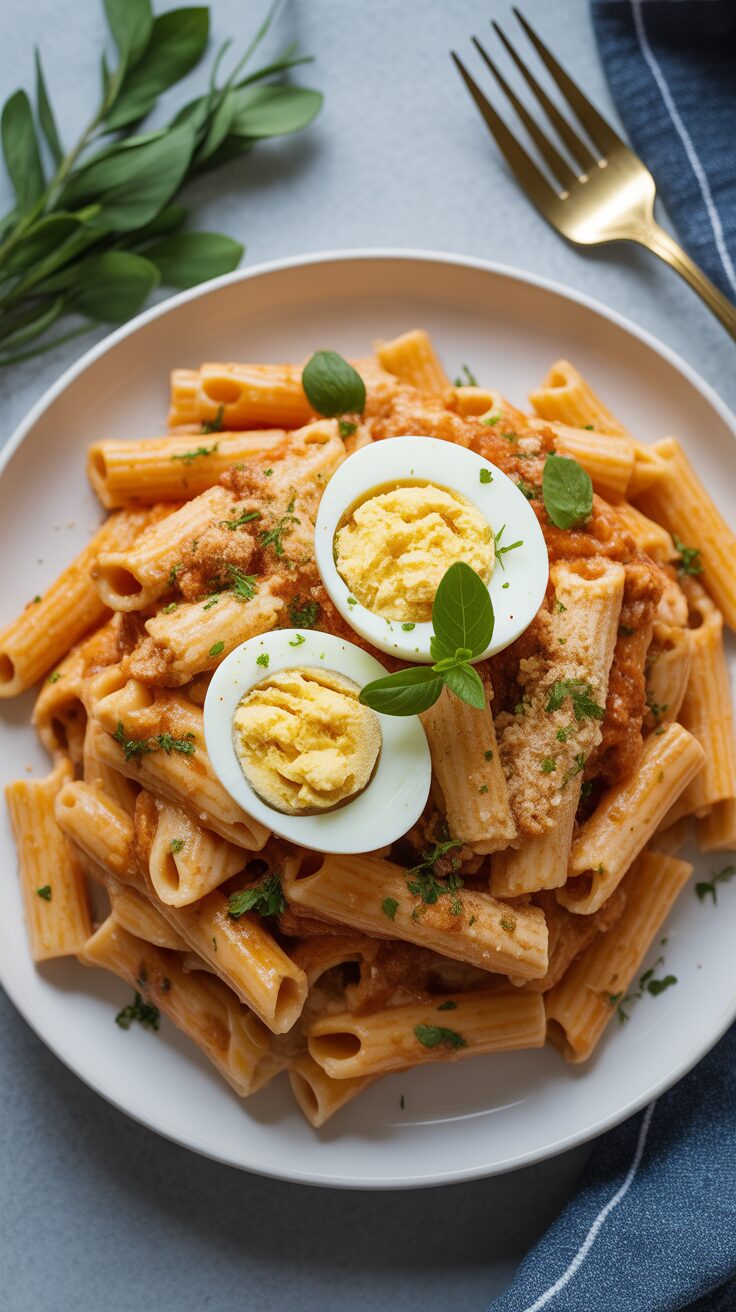Multiple Recipe Of Omelette Perfected for Quick and Easy Breakfasts

An omelette is a quick, versatile dish that can be enjoyed any time of day. Mastering a simple omelette recipe allows you to create a fluffy, tender base that works well with a wide range of fillings, from classic cheese to fresh vegetables. With just a few basic ingredients and straightforward techniques, you can make an impressive meal at home in minutes.
Whether you prefer a soft, creamy texture or a slightly firmer omelette, understanding the right steps to beat eggs, heat the pan, and fold the cooked eggs is essential. By preparing your fillings ahead of time, you can ensure a smooth cooking process and delicious results every time.
Exploring different flavor combinations and presentation tips can elevate your omelette game beyond the basics. Avoiding common pitfalls, like overcooking or under-seasoning, helps you consistently achieve a perfect dish tailored to your taste and dietary preferences.
Key Takeaways
- Use simple ingredients and proper technique for a fluffy omelette.
- Prepare fillings in advance to ensure even cooking.
- Experiment with flavors while avoiding common cooking errors.
Essential Ingredients for the Perfect Omelette
You need quality eggs, well-chosen fillings, and the right type of cheese to make a great omelette. Each element plays a specific role in taste, texture, and overall balance.
Egg Selection and Preparation
Start with large, fresh eggs, ideally farm-fresh or high-quality from your local market. Fresh eggs contribute to a tender texture and better flavor.
Before cooking, beat your eggs gently just until combined. Overbeating can incorporate too much air, making the omelette dry or rubbery.
Season the eggs lightly with salt and pepper. Use about 1/2 teaspoon of salt and 1/4 teaspoon of pepper per 2 eggs for balanced seasoning. Use butter or olive oil to cook the eggs for richness and to prevent sticking.
Recommended Fillings
Choose fillings that match your taste preferences but keep in mind how they affect cooking time and moisture.
Popular choices include:
- Vegetables: spinach, mushrooms, bell peppers, tomatoes
- Proteins: ham, bacon, smoked salmon, or cooked sausage
- Herbs: chives, parsley, or basil for freshness
Cook vegetables beforehand if they have high moisture, like mushrooms or spinach, to avoid sogginess. Adding fillings after the eggs start to set helps maintain texture and even cooking.
Choosing the Right Cheese

Use cheeses that melt well and complement your fillings. Good options are:
- Cheddar: sharp and flavorful
- Swiss: nutty and mild
- Mozzarella: creamy and stretchy
Shred or slice cheese thinly to ensure even melting. Add cheese near the end of cooking, once the eggs are mostly set, so it melts without overcooking the omelette.
Avoid very hard or aged cheeses as they may not melt properly during the quick cooking process.
Step-by-Step Omelette Cooking Techniques
Mastering the right approach to preparing your eggs, heating your pan, and folding or flipping your omelette are essential to achieving the perfect texture and presentation. Each step requires careful attention to ensure your omelette is fluffy, evenly cooked, and visually appealing.
Whisking Eggs Properly
Start by cracking 2-3 eggs into a bowl. Use a fork or whisk to beat them thoroughly until yolks and whites are completely combined. The goal is a smooth, uniform mixture without overbeating.
Incorporate a small pinch of salt while whisking to help break down the egg proteins, leading to a tender texture. Avoid adding liquid like milk or water unless you want a slightly lighter omelette.
Aim for air to be incorporated during whisking, which makes the omelette fluffy. Stop once the mixture appears slightly frothy but not bubbly or thin.
Controlling Pan Temperature
Heat your non-stick pan over medium or medium-low heat and add butter or oil. The key is to melt the butter without letting it brown, which signals the right temperature for eggs.
If the pan is too hot, eggs will cook too fast and become rubbery or brown unevenly. Too low, and your omelette will take too long and might dry out.
Test the temperature by swirling the butter; it should foam gently before eggs hit the pan. Maintain this moderate heat throughout cooking for best results.
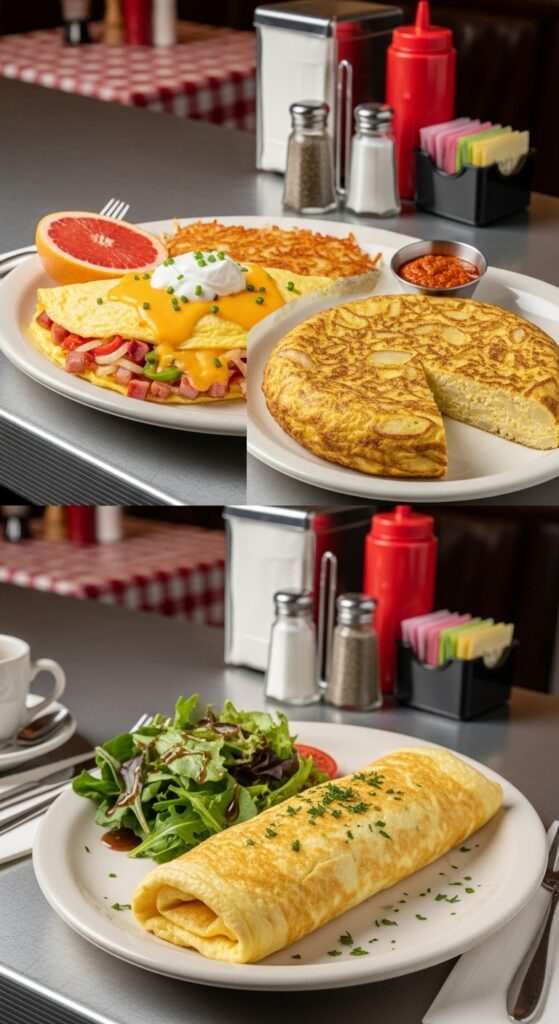
Techniques for Flipping or Folding
Once eggs start to set but surface remains slightly runny, use a spatula to spread the eggs evenly. If adding fillings like cheese or herbs, sprinkle them now.
For folding, bring the edge nearest to you over the middle, then fold the opposite side over to create a neat parcel. This traps heat and melts fillings evenly.
If flipping, gently loosen the edges first, then with a slow, confident motion flip the omelette over. Folding is usually easier and preferred for softer, creamier omelettes.
Classic Omelette Variations
Omelettes vary widely in technique, texture, and ingredients. Each style offers a distinctive way to combine eggs with fillings, whether you prefer smooth and tender, hearty and loaded, or simple and rustic. Understanding these classic methods will help you choose the right approach for your taste and meal occasion.
French-Style Omelette
The French-style omelette relies on technique to create a soft, tender texture without browning the eggs. You whisk the eggs well before cooking over medium-low heat, constantly stirring and shaking the pan.
The omelette is barely set when you stop stirring and let it firm slightly before folding into a neat envelope. You avoid extras that overpower the eggs, typically adding just herbs like chives, tarragon, or parsley inside.
Its smooth, creamy interior differs from denser omelettes. This style demands attention to heat control and timing to get the signature pale, delicate finish.
American Diner Omelette
The American diner omelette is larger, fluffier, and packed with a variety of fillings. You beat the eggs to incorporate air, then cook them more firmly over moderate heat.
This omelette is folded over generous amounts of ingredients such as cheese, ham, bell peppers, onions, mushrooms, and sometimes potatoes. Often served with sour cream or salsa, it is hearty enough for any meal.

The exterior is slightly browned and the inside fully set. It’s a versatile style that welcomes creativity in fillings and toppings.
Spanish Omelette (Tortilla Española)
The Spanish omelette, or tortilla española, is a thick, filling dish focused on potatoes and onions cooked slowly in olive oil. The eggs bind these ingredients into a dense, round cake.
You slice the potatoes thin and fry them gently instead of scrambling. Once combined with beaten eggs, the mixture is cooked in a heavy pan and flipped to brown on both sides.
Unlike quicker omelettes, this takes time to cook thoroughly. It’s served in wedges and eaten warm or at room temperature, often as a tapa or light meal.
Healthy Omelette Options
You can customize an omelette to fit your nutritional needs by focusing on ingredient choices that support your goals. Whether you want to increase protein intake, reduce calories, or enjoy a plant-based meal, specific adjustments make a difference.
Vegetarian Omelette
A vegetarian omelette emphasizes fresh vegetables and cheese without meat. Use ingredients like sautéed mushrooms, spinach, cherry tomatoes, zucchini, or broccoli for variety and nutrient density.
Add melty mozzarella or a sprinkle of your favorite cheese to enhance flavor. You can also include herbs such as basil or parsley. Cook your vegetables lightly to retain texture and nutrients.
Avoid heavy creams or excessive oil to keep it balanced. This option provides fiber, vitamins, and minerals while staying rich in protein from eggs and cheese.
Low-Calorie Omelette
To keep calories low, use mostly egg whites or a mix of egg whites with a small number of whole eggs. Egg whites provide protein without fat and cholesterol.
Incorporate low-calorie vegetables such as tomatoes, spinach, and mushrooms. Use minimal oil like a teaspoon of extra virgin olive oil or a non-stick spray to reduce fat intake.
Season with salt and pepper or fresh herbs for flavor without added calories. Adding a tablespoon of low-fat milk can improve texture without increasing calories significantly.
High-Protein Omelette
For a high-protein omelette, use whole large eggs or a combination of whole eggs and extra egg whites. You can also add cottage cheese or a small amount of shredded mozzarella.
Include protein-rich fillings like sautéed mushrooms, spinach, or even small portions of lean meats if not vegetarian. Using olive oil and butter sparingly helps maintain a healthy fat balance.
This type of omelette supports muscle repair and keeps you full for longer. Aim to balance egg protein with vegetable fiber for overall nutrition.
| Ingredient | Purpose | Suggested Amount |
|---|---|---|
| Large eggs | Base protein | 2-3 eggs |
| Egg whites | Increase protein, reduce fat | 2-3 whites |
| Vegetables | Fiber and vitamins | ½ to 1 cup, variety |
| Olive oil or butter | Healthy fat, cooking aid | 1-2 tsp |
| Cheese (optional) | Flavor and protein | ¼ cup shredded or sliced |
Creative Flavor Combinations
You can transform a basic omelette into a memorable dish by carefully selecting ingredients and seasonings that enhance each other. Paying attention to unique ingredients and spice blends will bring variety and depth to your omelette.

International Ingredients
Incorporating ingredients inspired by global cuisines adds distinct flavors to your omelette. Try smoked salmon and cream cheese for a Nordic touch, or include chorizo and Manchego cheese to evoke Spanish influences.
Asian-inspired options like shiitake mushrooms, scallions, and soy sauce create a savory umami profile. Meanwhile, Mediterranean flavors come alive with sun-dried tomatoes, olives, and feta cheese.
Consider these combinations to add variety:
| Cuisine | Ingredients |
|---|---|
| Nordic | Smoked salmon, cream cheese, dill |
| Spanish | Chorizo, Manchego cheese, paprika |
| Asian | Shiitake mushrooms, scallions, soy |
| Mediterranean | Sun-dried tomatoes, olives, feta |
These ingredients are easy to source and bring authenticity to your omelette.
Spice and Herb Pairings
Spices and herbs offer a simple way to elevate your omelette’s flavor without adding complexity. Use cumin and coriander for a warm, earthy profile, or try smoked paprika for subtle smokiness.
Combining fresh herbs like chives, tarragon, and parsley provides brightness and freshness. Pair basil or oregano with tomatoes and mozzarella for a classic touch.
A useful guideline:
- Spices: cumin, smoked paprika, turmeric, chili flakes
- Herbs: chives, tarragon, basil, oregano, parsley
Add spices to the beaten eggs before cooking, and sprinkle fresh herbs on top at the end to maintain their aroma and color. This approach keeps flavors balanced and vibrant.
Omelette Presentation and Serving Ideas
How you present and serve your omelette can enhance both the visual appeal and the dining experience. Choosing the right plating style and complementary sides balances flavors and textures effectively.
Plating Techniques
To present your omelette attractively, consider simple folds or rolling it for a neat, elegant shape. Slicing it into sections and layering it with ingredients like spinach or cheese creates a textured, lasagna-like effect that looks refined.
Using a wooden serving board adds rustic charm and works well with artisan bread and grilled vegetables. Keep colors vibrant by incorporating fresh herbs or brightly colored vegetables on the plate. Avoid overcrowding the plate to maintain a clean, appetizing look.

Recommended Side Dishes
Pair your omelette with whole grain toast or a side of quinoa to make it more filling. For spicy varieties, include cooling elements like yogurt or sour cream to balance the heat.
A fresh salad or grilled vegetables provide a healthy contrast in texture and flavor. Butter or a spread on artisan bread can enhance the meal’s richness without overwhelming the omelette’s flavors. Choose sides that complement but don’t compete with your main dish.
Common Mistakes and How to Avoid Them
Getting the texture, taste, and appearance right in an omelette depends on several specific factors. Paying attention to how you cook the eggs, distribute the fillings, and what pan you use can improve your results significantly.
Overcooking Eggs
Cooking eggs for too long or on too high heat will make your omelette tough and rubbery. You want the eggs to be just set—soft and slightly moist in texture.
Use moderate heat and watch the eggs carefully. Once you see the edges barely pulling away from the pan and the center is mostly set, remove it from the heat. The residual warmth will finish cooking the omelette without overdoing it.
Avoid stirring excessively; fold your omelette gently to retain the soft texture. Overcooking leads to dryness and a loss of flavor, so timing and heat control are essential.
Uneven Filling Distribution
If fillings clump in one spot or are placed unevenly, you won’t get balanced flavor or texture in every bite. Too much filling concentrated in one area can break the omelette.
Before folding, spread fillings evenly over one half or across the surface depending on style. Use a light hand to avoid tearing the eggs.
Consider preparing fillings in small, bite-sized pieces and pre-cooking ingredients like vegetables or meats to remove excess moisture. This avoids sogginess and helps the omelette cook consistently throughout.
Incorrect Pan Use
Using the wrong pan can cause sticking and uneven cooking. Non-stick pans with a flat bottom and low sides work best for omelettes.
Avoid heavy or stainless-steel pans that aren’t well-seasoned. These require more oil and careful heat management.
Choose a pan around 8 to 10 inches in diameter. Too large, and the eggs become thin; too small, and the omelette cooks unevenly. Preheat the pan on medium heat, then add a small amount of butter or oil to prevent sticking.
Tools and Cookware Recommendations
To make a well-cooked omelette, the right tools matter. You need a pan that heats evenly and prevents eggs from sticking. Nonstick pans are popular because they make folding and sliding the omelette simple.
Consider the size of your pan based on how many eggs you usually use. A pan between 8 to 10 inches is ideal for most omelettes. Smaller pans can be tricky to work with, while larger pans may make controlling the cooking process harder.
A good spatula is essential. Flexible silicone spatulas allow you to gently lift and fold the omelette without breaking it. Wooden or heat-resistant plastic spatulas also work well.
When choosing cookware, material affects performance. Nonstick pans are easiest for omelettes, but stainless steel offers better durability and browning if you have skill with handling them. Carbon steel is another option, combining heat control with nonstick benefits after seasoning.
Key tools to consider:
| Tool | Purpose | Tips |
|---|---|---|
| Nonstick pan | Even cooking, easy release | 8-10 inches preferred |
| Silicone spatula | Gentle folding and flipping | Flexible, heat-resistant |
| Whisk or fork | Mixing eggs thoroughly | Sturdy and comfortable grip |
| Cooking brush | Applying butter or oil evenly | Helps prevent sticking |
Using these tools with proper technique can improve your omelette results. Investing in quality cookware also makes cooking easier and more consistent.
Make-Ahead Omelette Tips
To save time, prepare your omelette fillings and eggs in advance. Chop vegetables, cook proteins, and whisk eggs the night before. Store everything in airtight containers to maintain freshness.
Use a non-stick pan and cook the omelette gently to avoid overcooking. When making multiple portions, consider baking them in a sheet pan for easy reheating.
For storing, refrigerate omelettes in a covered container. Reheat in the microwave on high for 1 to 1.5 minutes or until heated through. You can also freeze portions for longer storage.
Balance your ingredients by including protein, vegetables, and some fat like cheese. This combination will keep you full longer and provide a well-rounded meal.
Keep in mind these basic points:
| Tip | Why It Matters |
|---|---|
| Whisk eggs thoroughly | Ensures even texture and cooking |
| Use fresh ingredients | Maintains flavor and nutrition |
| Store properly | Prevents spoilage |
| Reheat gently | Keeps omelette moist and avoids toughness |
Following these steps ensures you have a quick, healthy breakfast ready with minimal effort in the morning.
Omelette Recipes for Special Diets
You can easily adapt omelette recipes to fit specific dietary needs by choosing appropriate ingredients and cooking methods. Attention to detail ensures your meal stays both nutritious and enjoyable under different restrictions.

Dairy-Free Omelette
To make a dairy-free omelette, avoid butter and cheese that contain milk. Use oils like olive, avocado, or coconut for cooking instead of butter. Nutritional yeast can add a cheesy flavor without dairy.
For fillings, rely on vegetables, meats, or dairy-free cheese alternatives. Spinach, mushrooms, tomatoes, and bell peppers work well. Keep an eye on processed ingredients to avoid hidden dairy components.
You can create a fluffy texture by whisking eggs thoroughly and cooking on moderate heat. Adding a small amount of water or unsweetened plant milk can also improve the omelette’s softness without dairy.
Gluten-Free Omelette
Omelettes naturally don’t contain gluten if you use fresh eggs and whole ingredients. However, be cautious with added fillers or pre-packaged seasoning mixes that might have gluten.
Choose simple fillings like fresh vegetables, plain cooked meats, and naturally gluten-free cheeses if you consume dairy. Cross-contamination can happen if you prepare omelettes using shared utensils or cooking surfaces.
If you want to add flavor, use gluten-free herbs, spices, and condiments. Always read labels when using processed products to confirm they meet gluten-free standards. This ensures your omelette remains safe and suitable for a gluten-sensitive diet.

